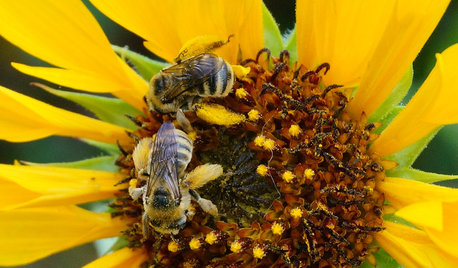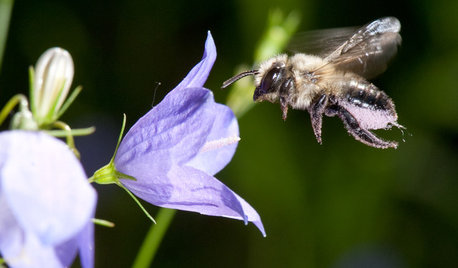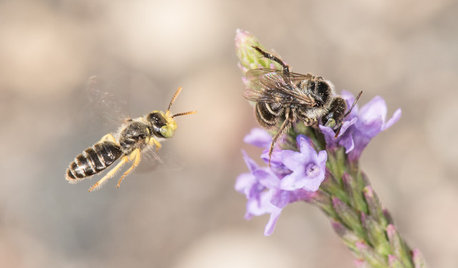Ground Bees
martin2525
16 years ago
Related Stories

EARTH DAY12 Entertaining ‘Bee-haviors’ of Native Bees
The parade of pollinator antics is another reason to create a garden that nurtures native bees
Full Story
GARDENING GUIDESInvite Cellophane Bees to Your Garden by Providing Patches of Bare Soil
Look for cellophane bees (Colletes) pollinating flowering trees and shrubs in U.S. gardens this spring
Full Story
GROUND COVERSGround Force: 10 Top Ground Covers for Your Garden
Protect your soil from weeds and drought this summer with a living mulch of ground covers
Full Story
GARDENING GUIDESSmall Carpenter Bees Are Looking for a Home in Your Plant Stems
Provide flowers and nesting sites in your garden for this beautiful, tiny, metallic blue wild bee — your plants will thank you
Full Story
GARDENING GUIDESInvite Mining Bees to Your Garden by Planting Their Favorite Plants
Look for mining bees (Andrena) pollinating woodland wildflowers in U.S. gardens this spring
Full Story
GARDENING GUIDESPut Out the Welcome Mat for Leafcutter Bees in Your Garden
Provide a diversity of flowering plants from spring through fall for these charismatic native bees, and you won’t be disappointed
Full Story
EARTH DAYHow to Design a Garden for Native Bees
Create a garden that not only looks beautiful but also nurtures native bees — and helps other wildlife in the process
Full Story
GARDENING FOR BUTTERFLIESGardening for the Bees, and Why It’s a Good Thing
When you discover how hard bees work for our food supply, you may never garden without them in mind again
Full Story
GARDENING GUIDES15 Native Flowers That Feed Native Bees
These perennials offer superfood to hundreds of bees and are gorgeous in their own right
Full Story
GARDENING GUIDESKeep an Eye Out for Fast-Moving Calliopsis Bees
These small native bees can often be seen foraging on vervain in the summer
Full Story






pikecoe
martin2525Original Author
Related Professionals
La Marque Landscape Architects & Landscape Designers · Mitchellville Landscape Architects & Landscape Designers · Surprise Landscape Contractors · Downey Landscape Contractors · East Hanover Landscape Contractors · Fort Mill Landscape Contractors · Leicester Landscape Contractors · Lemont Landscape Contractors · Little Ferry Landscape Contractors · Middle River Landscape Contractors · Muttontown Landscape Contractors · New Cassel Landscape Contractors · Pompton Lakes Landscape Contractors · Setauket-East Setauket Landscape Contractors · Shirley Landscape Contractorspikecoe
martin2525Original Author
pikecoe
sleeplessinftwayne
railheadwitz
ccoombs1
martin2525Original Author
chazparas
ccoombs1
sleeplessinftwayne
martin2525Original Author
chazparas
sleeplessinftwayne
youreit
zinniachick
pikecoe
martin2525Original Author
pikecoe
chickadeedeedee
sleeplessinftwayne
annedickinson
maryo_nh
sleeplessinftwayne